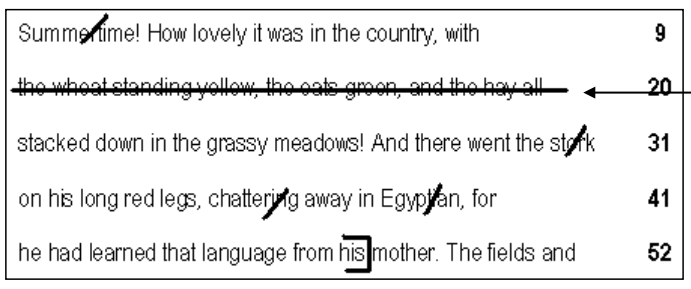How many single graphemes are in the English language? (hint- letters)
26
What does CBM stand for?
Curriculum-Based Measure, formative assessment conducted frequently in the classroom
What is an independent reading level?
Refers to vocabulary that a student can read without teacher assistance and content that can be comprehended at a high level while still identifying approximately 95% of the words correctly.
What are sight words?
Important, high-frequency words students can identify without analysis to increase reading fluency and comprehension
What is included in a 3-2-1 summarization activity?
3- New Things You Learned, Most Important
2- Interesting
1- Question
What is a phoneme?
Smallest units of sound, 44 phonemes, Example: Cat is made up of three phonemes
Describe what a non-sense word fluency assessment is.
Pronounce a series of words made up with simple patterns, one syllable, where you pronounce as many as one can in 1 minute; nonsense words eliminate memory and assess sound–symbol correspondences.
What is the instructional reading level?
Refers to vocabulary and content that the student can read with some outside assistance. Students should be 85–95% accurate at this level.
What is phonemic awareness?
The ability to recognize individual phonemes in spoken language (identify, discriminate, manipulate)
What does the 5 W's include as a identifying the main idea strategy?
Who, What, Where, When, Why
What is a grapheme?
Written symbols that represent individual phonemes, example: "sh" or "ck"
Describe what a sight word assessment includes.
Read as many high-frequency words as you can in 1 minute.
What is the frustration reading level?
The student cannot read with any degree of independence, accurately identifying fewer than 80% of the words.
What is the difference between repeated readings, unison reading, and paired reading?
Repeated- Student reads a text multiple times
Unison- The class reads a text altogether (teacher included)
Paired- Two students read a passage together
What is one strategy to help student learn/build vocabulary?
Example: 4-corner vocabulary chart- write it, define it, draw it, use it in a sentence, synonym or antonym
What is a morpheme?
The smallest unit of meaning in language, example: unhappy is made up of two morphemes (un, happy)
Describe what an oral reading fluency passage is.
What reading level should library books and seatwork be at for a student?
Independent Level
What does the prefix "post" mean? What is an example of this prefix added to root word?
Post- meaning to occur after
postpartum
Student Passage:
Ben and his dad went fishing. Ben took the pole. His dad took some worms. They got on a boat. The boat was in Pine Lake. Ben’s dad drove the boat. He knows where to find the fish. Ben liked the boat ride. Ben put a worm on the hook. He put his line in the water. He felt the pole pull. Was it a fish? He reeled it in. He did not get a fish. Ben got an old can.
Student Asked: What were Ben and his dad doing?
What kind of question-answer relationship is this? Why?
Right There! The student can find the answer right in the text (fishing), literal
How many morphemes are in the word "unkindness"? What are they?
Three- un, kind, ness
How many wcpm did this student read? 
33 wcpm
48 total orginally-10 omissions= 38 total
38-5 errors= 33 wcpm
What level should instructional materials be at for a student?
If a student has difficulty, what are TWO possible accommodations to help?
Instructional Level
Some examples include: extended time, visuals, previewing vocabulary, chunking longer texts, etc.
Structural Analysis: What is a prefix? What is a root word? What is a suffix?
Provide an example of each!
Prefix- A group of letters placed before a root word to change the meaning, ex: mis
Root- A word that can stand alone or have a prefix/suffix added to change meaning, ex: misbehave
Suffix- A group of letters placed after a root word to change the meaning, ex: misbehaving
Student Passage:
Ben and his dad went fishing. Ben took the pole. His dad took some worms. They got on a boat. The boat was in Pine Lake. Ben’s dad drove the boat. He knows where to find the fish. Ben liked the boat ride. Ben put a worm on the hook. He put his line in the water. He felt the pole pull. Was it a fish? He reeled it in. He did not get a fish. Ben got an old can.
Student Asked: How do you think Ben felt when he realized he didn't catch a fish?
What kind of question-answer relationship is this? Why?
Author and Me- The student uses clues from the text and connect it to personal experience/background knowledge.
Ben did not catch a fish like he wanted to, but instead, a can. When I don't get what I want I get upset or angry. Ben might be upset or angry too.